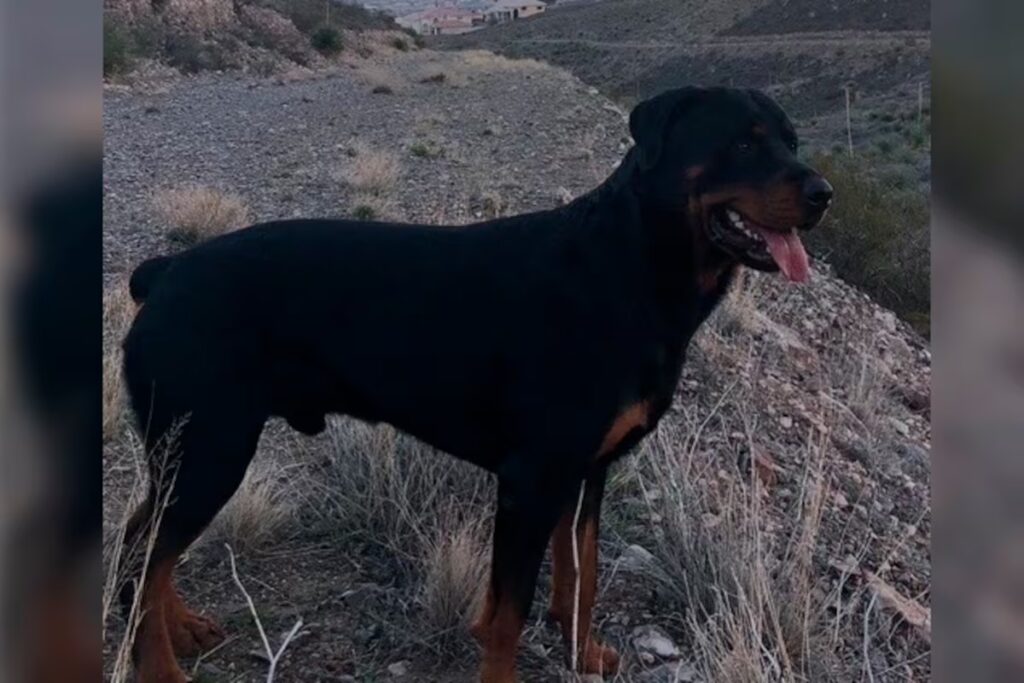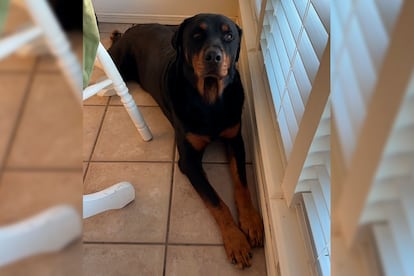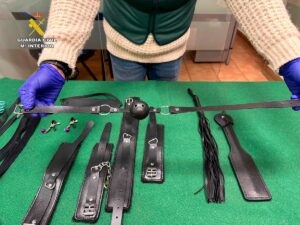
This story was co-published with Puente News Collaborative in partnership with KTEP News. Puente News Collaborative is a nonprofit, bilingual newsroom, convener, and funder dedicated to high-quality fact-based news and information from the U.S.-Mexico border.
The Border Patrol showed up at a quiet house on an autumn morning, just after dawn, looking for undocumented immigrants. They said they had been watching the house for days.
Instead, an officer shot and killed the family dog.
More than two months after the shooting, the 26-year-old homeowner is waiting for answers and demanding accountability as to why his beloved seven-year-old Rottweiler was killed Sept. 9 in El Paso’s tree-lined Upper Valley.
The dog’s owner does not want his name used for privacy reasons. His attorney said he was cooperative when officers arrived and told him they were investigating a tip regarding “alien smuggling into the residence,” something the homeowner denied.
“He told the officers they could come in,” said Marisa Ong, the family’s lawyer, who works with the national law firm, Singleton Schreiber. But first, the homeowner said he would put his dog Chop in a bathroom according to Ong. He told officers where his dog was.
Although his owner had secured Chop inside a bathroom stall, the dog was released by a Border Patrol agent and shot from a distance of about 18 feet, Ong told KTEP News.
U.S. Customs and Border Protection confirmed in a statement that on September 9, “a U.S. Border Patrol agent was involved in a use-of-force incident in El Paso, Texas…The incident involved a dog.”
The use of force is currently under review by CBP’s Office of Professional Responsibility in accordance with CBP policies according to the statement which reads in part: “CBP takes such incidents seriously.”
The killing of Chop, the dog, shows that it is not just migrants and children but also pets caught up in the Trump administration’s aggressive immigration enforcement effort in cities across the country, from Los Angeles and Chicago to San Antonio and Charlotte.
The incident sparked a national outcry on social media platforms filled with videos of officers attacking people on city streets, breaking car windows and arresting immigrants at businesses, even at a home installing Christmas lights on a tree in Charlotte. The scenes have become all too common as the Trump administration seeks to carry out mass deportations. According to CBP data, incidents related to use of force by federal agents increased this summer, but then began to decline. U.S. Rep. Veronica Escobar, D-Texas, sent a letter to the U.S. Commissioner of Customs and Border Protection and the chief of the Border Patrol on Nov. 18 requesting an update on the investigation into the use of lethal force at a private residence in El Paso.
“This accident is unforgivable,” Escobar wrote. “A family lost their beloved dog due to the actions of a Border Patrol officer, and we are not yet aware of what, if anything, the agency is doing to correct the situation or prevent a similar situation from happening again.”
The incident in EL Paso’s pristine Upper Valley began when officers knocked on the man’s door. The owner cooperated and told officers they could enter the home after confining Chop.
“He showed them the exact bathroom he was in. And he told them if they wanted to look for that bathroom to let him know and he would move Chop,” Ong said.
The officers asked the homeowner to come out. He agreed and went to his truck parked in the driveway to get his identification. Just then I heard a shot, Ong said.
When the man ran back to his home, officers tried to detain him, according to Ong.
“He saw the officer come into the house. He had his gun drawn. He pointed the gun at my client. And then he saw his dog Chop lying on the floor yelping in pain.” Ong said.
Chop bled to death.
By all accounts, the Rottweiler was an “extremely friendly” dog according to the NGO.
The Border Patrol found no evidence of illegal activity at the home.
Ong said the family is cooperating fully with the investigation by CBP’s Office of Professional Responsibility while awaiting answers.
Among their questions: Why did the lone Border Patrol agent enter the residence?
“It is extremely against protocol for an officer to enter a home alone,” said Ong, a former prosecutor who previously worked on behalf of the federal government.
“It creates a safety risk for the officer. It creates a safety risk for anyone on scene,” he said.

Additionally, the family wants to know why the officer opened the bathroom door after the homeowner said Chop was safe inside.
And then there’s the question of when the Border Patrol agent fired his weapon. “The bullet hole where Chop was shot is about 18 feet away from the bathroom,” Ong said.
“If Chop had lunged at the officer in any way or been aggressive, you would have assumed the officer would have shot him right there in the bathroom,” he said, adding that the owner never heard Chop even bark.
Ong filed a Form SF-95 on behalf of his client as required for a claim for damages, injury or death caused by a federal employee. Additionally, the family wants the El Paso District Attorney to prosecute animal cruelty charges. The district attorney’s office said it does not comment on pending cases.
According to Ong, after Chop’s murder, the young homeowner could no longer set foot in the house he was renovating with his father.
“He’s extremely upset. Chop was his best friend,” she said. “Our hope is just that there is transparency both about what happened and about responsibility, so that this never happens to another family again.”
Sign up to our weekly newsletter to get more English-language news coverage from EL PAÍS USA Edition




